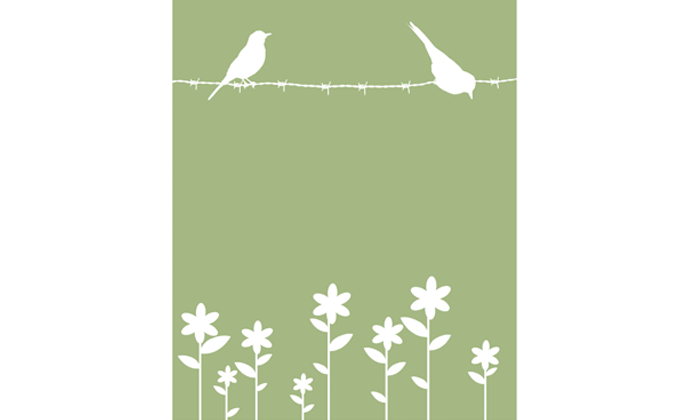From Jammu, the road to Rajouri-Poonch winds its way along the Chenab and then zig zags through mountains, occasionally disturbed by small hamlets, more frequently by ghettos of army camps. The army size in these twin districts is far more alarming than anywhere else in Jammu and Kashmir. Valley included. Fenced out camps, heavy barricades, huge military convoys on the move are familiar scenes, not only since 1989 when militancy began but from 1947. The formidable presence however, stands unchallenged. History— only orally and secretly passed from generation to generation— may have seen its ups and downs in the relationship locals have with the Indian army, but as of today, the hugely conspicuous force, almost a permanent part of this landscape, is neither something people want to dispense with, nor something they are in love with. It’s just a necessary evil they cannot do without or wish away.
Talk to locals – Muslims or Hindus – and despite different experiences the common refrain is: “Had the army not been there, we’d have been swallowed by Pakistan.” They might even chip in how the army is looking after their interests – health, education, development. The closer one moves to the bloody Line of Control, the more one is likely to hear about its ‘good deeds’. This is indicative of two things. The obvious – a different face of the army in Rajouri-Poonch as compared to Kashmir, where it is never seen as a friend. And the not so obvious – over-dependence of border residents on the army obliquely betrays the absence of civil administration which should have been tasked to do such jobs. And, beneath this indispensable role that the army has assumed, lie buried hundreds of stories of torture, harassment and repression in five decades. It requires hours of conversation to get to such tales, reminding one of the bitterness that continues to lie beneath the picture of bonhomie.
The further back you go, the more bitter they get. 1965 and 1971 especially churn out the climax of goriness – of villages burnt, of men picked up, tortured or forced to flee. Before that, 1947-48 witnessed horrifying communal violence, stories of which are shared across the religious or ethnic divides – Hindus or Muslims, Paharis or Gujjars. But, narrative changes thereafter, depending on the community identity. Pahari Muslims talk about the 1965 war, bringing out the horrors embedded in their minds. During that war, over a lakh people fled across the borders and their empty villages live to tell tales of humans who once lived there. But people are quick to add that after 1971, the army made a lot of efforts to foster friendly relations with civilians. Post militancy period saw a re-run of war times, though with much lesser intensity. “We never supported militancy; we are Indians,” most Muslims make it a point to say, trying to wish away memories prior to 1971. Post militancy, the texture of horror stories changes, with narratives finding perpetrators both militants and the army, its informers and hired surrendered militants.
Reshma, a Panch from a village in Poonch, recalls the sleepless nights she spent for years inside her two-room mud house, guarding her children and sitting up awake with a gun in her hands in fear of a surrendered ultra who had terrorised the village, might attack her family. On the other side, is the army repression. Some men from Kerni, one of the worst affected border villages of all times, also narrated an incident seven years ago, about a family forced to flee across LoC because the head of the family refused to work as an informer. He and his family were locked up in their house for two days and tortured. Such incidents, they say, are common. Army’s repression can be provoked at the slightest suspicion, sometimes quite baseless ones. However, with militancy almost brought to naught, and most surrendered militants either killed or reined in, such stories are rare nowadays.
The narrative of Hindus is quite different. A Hindu family from Surankote, one of the worst affected towns during peak militancy, narrated how things came to a point where Hindus began fleeing to Poonch town after some communal killings by militants, and returned only after the government had agreed to provide them army protection. Army men were deployed on rooftops of Hindu houses to provide them a sense of security. However, such physical proximity with the army could only invoke fear in Muslims, who claim they were greater sufferers. “Neither the army trusted us, nor militants. We were threatened, tortured and killed by both.” And that is not the only casualty of the years of militancy. Like the previous war times, it once again sharpened communal polarization, further honed by the government and army for short term ends. Madan Sharma from Surankote admits that relations between two communities soured those days, but adds that things are now better.
That is the popular narrative one comes across throughout Rajouri and Poonch. Both communities say that communal harmony is at its best, though admitting that relations have soured several times before; last time was in 2008 during the Amarnath land row. Visibly, one does not find signs of this very recent communal conflagration. In Poonch, which is the base camp for a lesser known Buddha Amarnath yatra during the month of recent Ramzan, local Muslims joined Hindus in welcoming pilgrims and organising langars. Manmeet, who gives a graphic account of violence and uncertainties of 2008, tells that on a personal level, Hindus enjoy a great relation with Muslims. “We go to their homes, they come to ours. It is very harmonious. My best friend is a Muslim. But deep down, neither do they trust us nor we them.” Most others are not so forthcoming in talking about Hindu-Muslim relations, but one finds signs of it in the manner in which stories throw up binaries of ‘us’ and ‘them’. A Hindu teacher in Rajouri while talking about the impact of militancy on the school drop-out rate, particularly among girls, states – “When things improved, we started going to villages and asking girls to return to schools. Our girls never dropped out, it was only them Muslims.”
A long history of militarization, violence and uncertainties has never allowed people of these border districts to carry on with their normal lives and normal relations, or to create stronger foundations of communal harmony, which one finds intact on the surface during comparatively peaceful times like now. The place is like a walnut inside out. Soft and inspiring from the outside, but hard inside, hard enough to be cracked by the slightest push.


